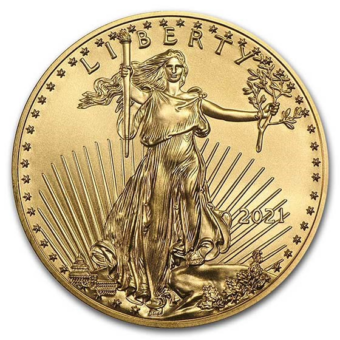A Daily Journey Through the Week's Market
Monday - 7.01.24: Gold and silver markets experienced mild fluctuations, with gold prices trading steadily within a narrow range of $2,300 to $2,340, closing at $2,330.80. Silver prices showed modest gains, hitting a session high of $29.823 and closing at $29.552, reflecting a 0.35% increase. Market movements were influenced by anticipation of upcoming economic data and geopolitical tensions, which kept investors cautious.
Tuesday - 7.02.24: Gold and silver markets saw modest activity with gold prices remaining steady, trading around $2,330.80, showing little change from the previous session. Silver prices experienced slight upward movement, peaking at $29.823 and ending the day at $29.552, up by 0.35%. The markets were influenced by investor anticipation of key economic data releases and ongoing geopolitical concerns, maintaining a cautious trading environment.
Wednesday - 7.03.24: Gold and silver markets remained relatively stable. Gold prices hovered around $2,330, with minimal fluctuations as investors awaited upcoming economic data. Silver prices held steady as well, closing at $29.55. The trading environment was marked by caution due to ongoing geopolitical tensions and uncertainty over future economic policies.
Thursday - 7.04.24: US markets closed - Independence Day
Friday - 7.05.24: Gold and silver prices rose in early U.S. trading on Friday following a key U.S. economic report that met market expectations, indicating the economy is stable. August gold increased by $10.60 to $2,380.00, while July silver went up by $0.157 to $30.69. The June employment report showed non-farm payrolls rising by 206,000, close to the expected 200,000, with the unemployment rate slightly increasing to 4.1%. This data supports the stance of monetary policy doves advocating for a Federal Reserve rate cut.
Gold Prices Climb Amid Strong June Jobs Report
Gold prices maintained their overnight gains as the U.S. economy added 206,000 jobs in June, surpassing expectations of 191,000, despite the unemployment rate ticking up to 4.1%. This bullish momentum in the gold market follows revisions to April and May job figures, which were significantly lower than initially reported. Average hourly wages increased modestly, reflecting contained inflation pressures. Market analysts suggest the data might prompt the Federal Reserve to consider rate cuts sooner, with gold traders optimistic about continued gains.
Divided Fed: Uncertainty Looms Over Future Rate Decisions
The Federal Open Market Committee (FOMC) minutes from the June meeting reveal a united front on maintaining price stability but showcase deep divisions on the future rate path. While members agree on the general economic outlook and inflation trends, they are split on whether rate cuts are needed to support weakening employment or if rate hikes are necessary to combat persistent inflation. This divergence highlights the uncertainty facing monetary policy, with potential significant impacts on financial markets, including the precious metals sector. The Fed's indecision could lead to volatility in gold and silver prices as investors react to mixed signals about the economic future.
Skyrocketing Costs: Fourth of July Cookouts Hit Record High
This year, inflation is taking a hefty bite out of Fourth of July celebrations, with cookout costs soaring to unprecedented levels. The American Farm Bureau's latest survey reveals that a typical holiday feast for ten now costs $71.22, a 5% increase from last year and a staggering 30% rise over the past five years. With ground beef up 11% and pork chops up 8%, consumers are feeling the pinch. Factors like reduced cattle inventories, animal welfare laws, and avian flu outbreaks are driving prices higher. Despite the overall slowdown in inflation, these specific increases highlight the ongoing financial strain on American families during holiday gatherings.
Seize the Dip: Gold and Silver Pullbacks Present Prime Buying Opportunity
With the nonfarm payrolls report looming, market analyst Christopher Lewis from FX Empire advises traders to view any pullbacks in gold and silver prices as strategic buying opportunities. Despite recent quiet trading due to the U.S. holiday, Lewis sees strong upward momentum for both metals, driven by factors like central bank purchases and long-term dollar debasement. He expects gold to eventually hit $2,400 and suggests looking for entry points at the 50-day EMA. Similarly, for silver, any drop following the jobs report could be a chance to buy, especially with Wall Street anticipating future interest rate cuts.
Fintech’s Broken Promise: Thousands of Americans Locked Out of Bank Accounts
Fintech’s allure of combining innovation and safety has unraveled dramatically, leaving over 100,000 Americans locked out of their bank accounts after middleman Synapse declared bankruptcy. Customers like Natasha Craft, a FedEx driver from Indiana, found their life savings frozen, despite the promise of FDIC insurance. Synapse’s collapse has exposed the fragility of fintech partnerships, where startups like Yotta relied on intermediaries rather than being actual banks. This fiasco has thrown the fintech industry into turmoil, revealing the risks consumers face when trusting their money to non-traditional financial services. As customers scramble to regain access to their funds, the supposed security of fintech apps stands revealed as a dangerous mirage.
BRICS on the Offensive: 52% of Trade Settled in Yuan
China is aggressively pushing the de-dollarization agenda within the BRICS alliance, dramatically increasing the use of the yuan for international trade. As of March 2024, 52.9% of China's trade is settled in yuan, a stark contrast to the 42.8% still using the US dollar. This shift signals a significant move away from the dollar, with China forging new trade partnerships and encouraging other developing nations to follow suit. If other BRICS members emulate China’s strategy, the US dollar could face serious challenges in the global market, altering the landscape of international trade and finance.
Regional Banks in Turmoil: Why Wall Street is Still Nervous
The recent 24% plunge in First Foundation’s stock after a $228 million investor infusion underscores Wall Street’s lingering anxiety over regional banks. Despite reassurances from CEO Scott Kavanaugh, the heavy concentration in multifamily loans and ongoing commercial real estate challenges have investors spooked. This concern isn't isolated; other regional banks like Bank OZK and Axos Financial have faced similar scrutiny, reflecting broader fears about elevated interest rates and high funding costs. With regulators demanding reduced exposure to commercial real estate and the Fed's policies squeezing profits, the financial health of these mid-sized banks remains precarious, fueling ongoing market skepticism.
Trump’s Return Could Spark Gold Rush Amid Trade Wars
The potential return of Trump to the White House is expected to drive global investors towards gold, with both gold and silver prices likely to benefit from renewed trade wars, according to Heraeus analysts. With Trump leading in the polls and proposing aggressive trade policies, including a 10% tariff on all imports and a 60% tariff on Chinese goods, the economic uncertainty and geopolitical tensions could push investors to seek the safe haven of precious metals. Past trade wars have shown a correlation with rising gold prices, and a dovish Federal Reserve under Trump could further weaken the dollar, boosting gold demand. Silver is also poised to gain from increased domestic demand driven by green energy initiatives, including solar manufacturing and EV infrastructure expansion.
Inflation, Rate Cuts, and Risks: Powell and Lagarde’s Take on U.S. and EU Economies
Federal Reserve Chair Jerome Powell and ECB President Christine Lagarde provided critical insights into inflation forecasts, potential rate cuts, and major economic risks during their talks at the ECB Forum. Powell emphasized the progress in reducing U.S. inflation and maintaining a strong labor market but warned against premature rate cuts. Lagarde echoed similar caution for the eurozone, stressing the ongoing impacts of geopolitical tensions and the need for a regulatory framework for AI. Both leaders highlighted cyberattacks as significant risks to their economies. Powell forecasted U.S. inflation in the mid to low twos for the next year, while Lagarde projected eurozone inflation to be in the low twos.
Next Week’s Key Events
Monday, July 8
● 3:00 pm: Consumer Credit (May)
Tuesday, July 9
● No reports scheduled
Wednesday, July 10
● No reports scheduled
Thursday, July 11
● 8:30 am: Initial Jobless Claims (July 6)
● 8:30 am: Consumer Price Index (June)
● 1:00 pm: St. Louis Fed President Alberto Musalem speaks
Friday, July 12
● 8:30 am: Producer Price Index (June)
● 10:00 am: Consumer Sentiment (prelim) (July)
IMPACT ON PRECIOUS METALS MARKETS
Consumer Credit
Changes in consumer credit can indicate the overall economic health and consumer spending habits. An increase in consumer credit might signal economic confidence, potentially decreasing the demand for safe-haven assets like gold and silver. Conversely, a decrease could indicate economic weakness, increasing demand for precious metals.
Initial Jobless Claims
This report reflects the number of new unemployment claims. Higher-than-expected claims can indicate a weakening job market, which may boost demand for gold and silver as safe-haven assets. Lower claims suggest economic strength, which could weaken demand for these metals.
Consumer Price Index
The CPI measures inflation. Higher inflation rates can lead to increased demand for gold and silver as hedges against inflation. Conversely, lower inflation may reduce the attractiveness of these metals.
St. Louis Fed President Alberto Musalem speaks
Speeches by Federal Reserve officials can influence market expectations about monetary policy. Hawkish comments may strengthen the dollar and lower gold and silver prices, while dovish comments could weaken the dollar and boost prices.
Producer Price Index
The PPI measures wholesale inflation. A higher PPI can signal rising inflationary pressures, potentially increasing demand for gold and silver. A lower PPI might have the opposite effect.
Consumer Sentiment
This report gauges consumer confidence. Higher consumer sentiment can indicate economic strength, reducing the demand for safe-haven assets like gold and silver. Lower sentiment may increase their demand as consumers seek to protect their wealth against economic uncertainty.






















